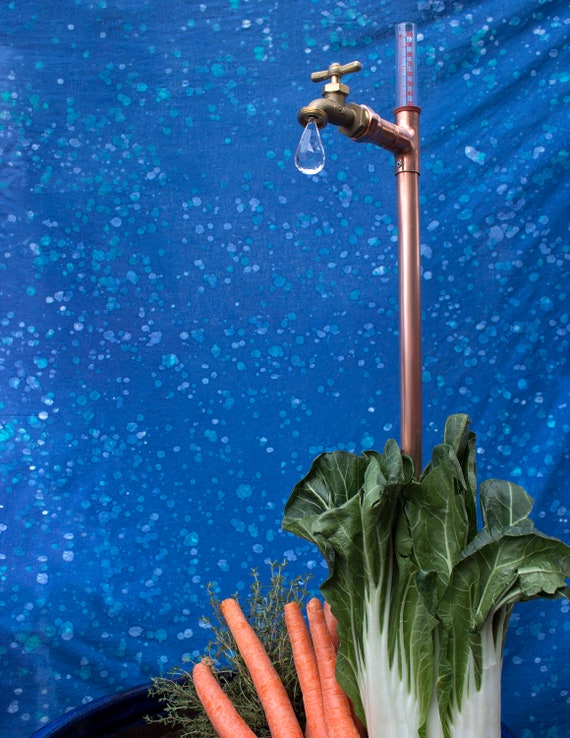Understanding the Science Behind The Rain Gauge: Insights and Innovations Introduced
Wiki Article
Do It Yourself Rain Scale: Basic Steps to Make Your Own
Developing your own DIY rain scale is a straightforward and effective means to measure and tape-record rainfall. With just a few typical materials and some fundamental actions, you can conveniently create your own rain gauge at home. Let's get started on making your DIY rain gauge today!Gather Materials
To begin building your do it yourself rainfall scale, collect all the needed products making use of a thorough list of items. Having the best materials available will certainly ensure the successful creation of your rain gauge and permit accurate dimensions of rainfall. To start with, you will need a clear plastic container or cylinder, such as a plastic bottle or container. Make certain the container is transparent to make sure that you can conveniently see the water degree inside. Next off, you will certainly need a ruler or measuring tape to mark the increments on the container. This will certainly allow you to gauge the amount of rainfall precisely. Furthermore, you will need a long-term marker or waterproof tape to mark the measurements on the container. This will certainly make sure that the markings stay noticeable also when subjected to rain. Ultimately, you will certainly need a durable base or risk to safely hold your rain scale in position. This can be a wooden or steel stake that can be put into the ground or a durable level surface to give stability. Collecting these products beforehand will certainly enhance the building process and guarantee that you have everything you require to produce your very own DIY rainfall scale.Prepare the Container

Mark the Dimension Increments
To properly determine the amount of rainfall, accurately noting the measurement increments on your DIY rainfall scale is necessary. Without specific and clear markings, it would certainly be difficult to figure out the exact amount of rains accumulated in your rain scale. Here are the actions to mark the measurement increments on your rain gauge.The most common devices for gauging rainfall are inches and millimeters. When you have selected the system, use a permanent pen or waterproof paint to mark the increments on the side of your rain gauge.
When marking the increments, it is very important to make certain that they are uniformly spaced and plainly noticeable. Utilize a ruler or gauging tape to make certain precision and consistency. Furthermore, see to it that the markings are resistant to fading or abrading, as exposure to the aspects may create them More about the author to degrade in time.
Location the Rain Scale Outdoors
The rain scale must be put outdoors to accurately collect rainfall data. The area chosen for the rain gauge should be open and complimentary from any blockages that can possibly influence the dimension of rainfall. The Rain Gauge.In addition, it is important to position the rainfall gauge on a secure surface, such as a level ground or a tough article. This will protect against any movement or tilting of the gauge, which can lead to unreliable measurements. It is likewise a good idea to prevent positioning the scale near any resources of fabricated water, such as sprinklers or water drainage systems, as this can interfere with the precision of the measurements.
Screen and Document Rainfall Data
Regular surveillance and recording of rainfall information is crucial for exact information analysis and interpretation. By monitoring rainfall measurements, you can gain important understandings into climate patterns, climate fads, and water source administration. To successfully keep an eye on and record rains data, it is essential to establish click reference a regular and maintain consistent methods.First of all, make certain that your rainfall gauge is placed in an open location far from challenges such as trees or structures that might block rainfall. Furthermore, ensure the rain gauge is degree and safely anchored to stop any type of activity that could affect the accuracy of the dimensions.

When taping the rains information, it is necessary to note the date and time of each dimension. Utilize a ruler or a measuring stick to determine the rainfall depth in the rain gauge, and record this details accurately.
To make certain the accuracy of the measurements, it is suggested to clear the rain scale after each recording. This will certainly protect against any overflow or dissipation from impacting subsequent dimensions.
Conclusion
Finally, developing a DIY rainfall gauge is a easy and useful way to monitor and videotape rains information (The Rain Gauge). By complying with the actions laid out in this post, you can quickly gather materials, prepare the container, mark the dimension increments, and position like it the rainfall gauge outdoors. On a regular basis monitoring and taping rains information can offer valuable information for numerous functionsHaving the right materials on hand will ensure the effective creation of your rain scale and allow for precise dimensions of rainfall.To precisely determine the amount of rainfall, accurately marking the dimension increments on your Do it yourself rainfall gauge is necessary.The rainfall gauge ought to be positioned outdoors to precisely accumulate rainfall information. The place chosen for the rainfall gauge ought to be totally free and open from any blockages that could possibly affect the dimension of rains.In conclusion, producing a DIY rain scale is a easy and sensible method to keep an eye on and tape-record rains information.
Report this wiki page